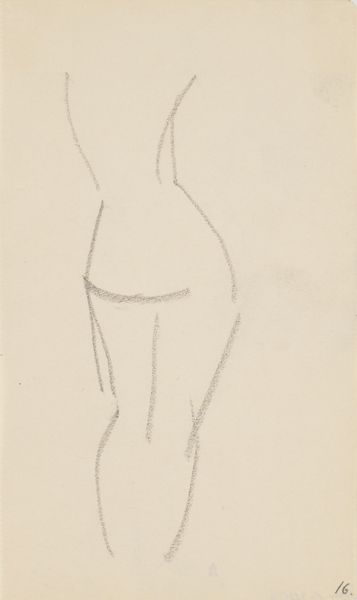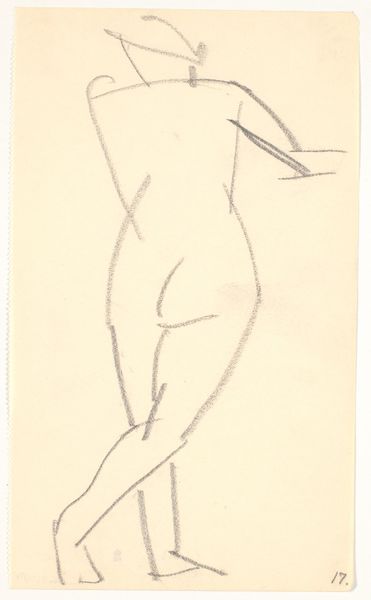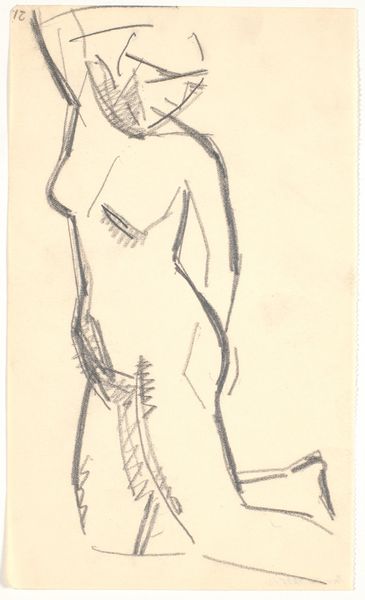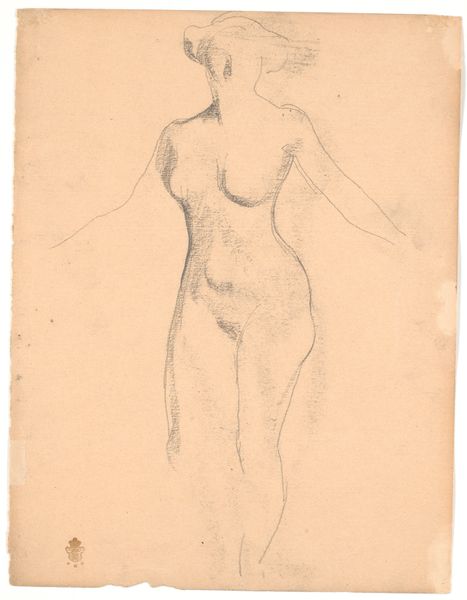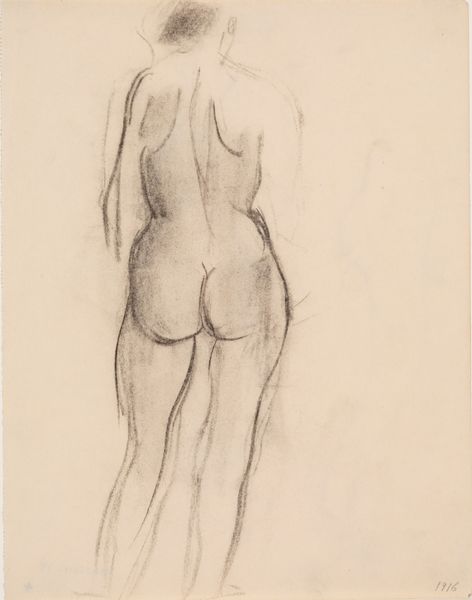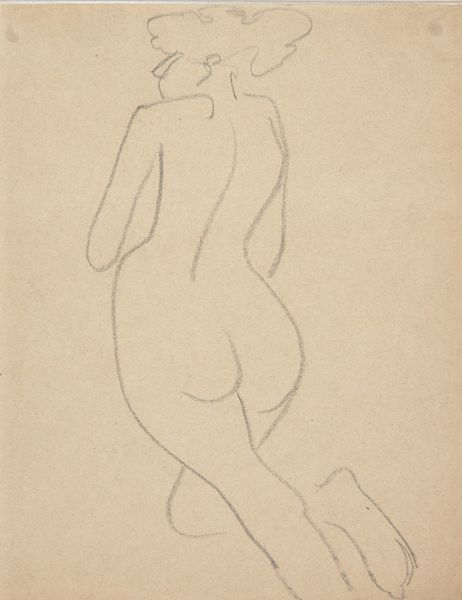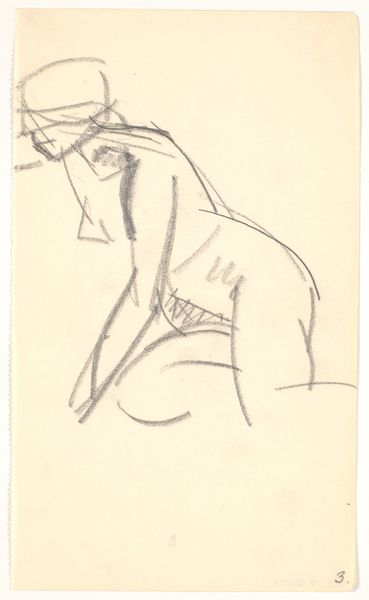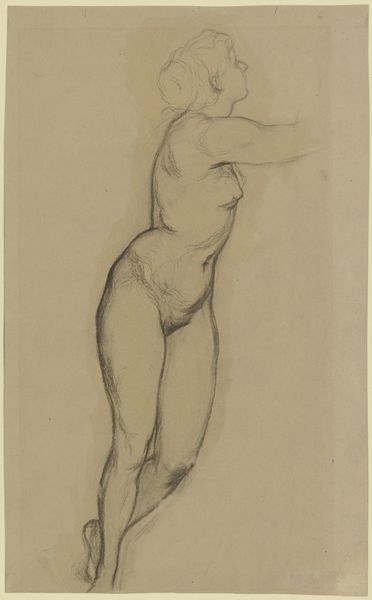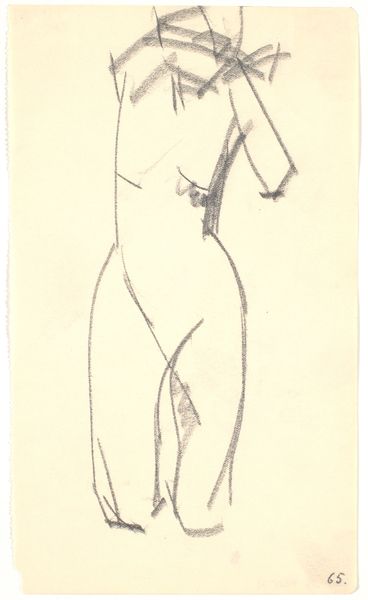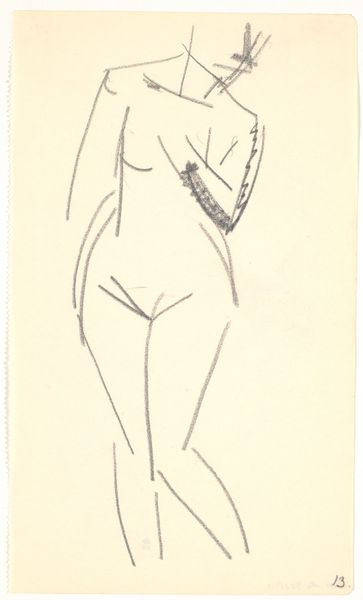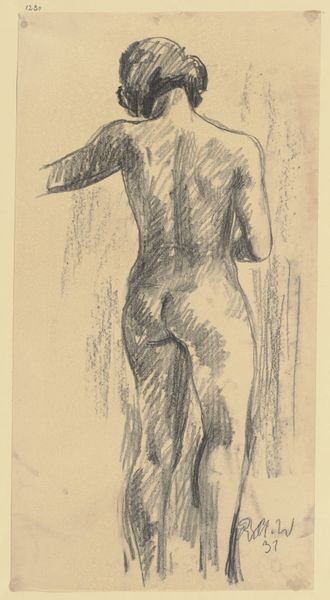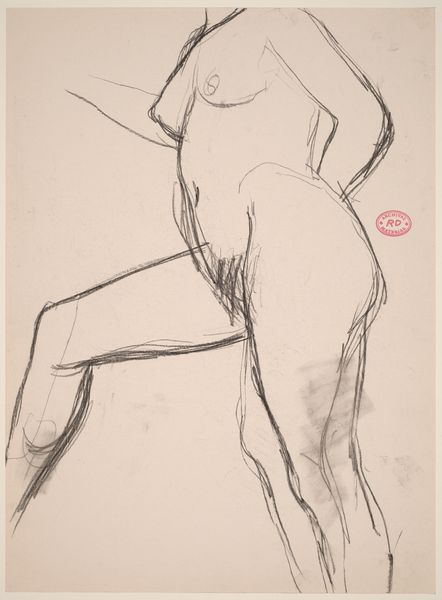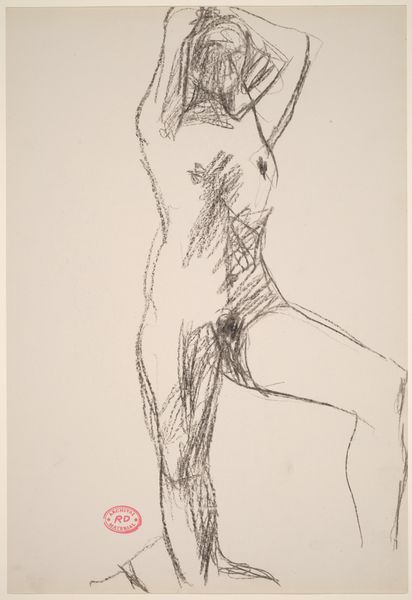
drawing, pencil
#
portrait
#
drawing
#
figuration
#
pencil
#
nude
Dimensions: 209 mm (height) x 124 mm (width) (bladmaal)
Curator: Right now, we’re looking at Karl Isakson’s "To stående modeller," created sometime between 1914 and 1915. It's a pencil drawing depicting two standing nude figures. What are your initial thoughts? Editor: Well, first, it strikes me as an incredibly efficient use of material. I mean, look how much he communicates with just a few confident lines. I wonder what the labor conditions were like, access to materials. Was this a sketch for a larger work, a means of practice? It feels almost like a study in economical mark-making, highlighting the pure physicality of the female form. Curator: That efficiency is fascinating, isn’t it? Almost like he's distilled the essence of form. For me, it’s as if Isakson is reaching for something beyond the purely representational—there's a real feeling of interiority, a quiet mood about it that goes past surface observation. Perhaps hinting to the feeling of uncertainty of the early 20th century. Editor: Definitely. The scarcity of detail encourages our eye to fill in the blanks, which directs our thought toward broader social or cultural themes, perhaps linked to the rise of industrial production? Are those minimalist strokes reflective of more widespread labor streamlining trends or mass production of artworks for a more populist audience at that time? What’s not said speaks volumes. Curator: I think that's spot-on, the negative space does as much work as the graphite. To me it hints to a more emotive approach from Isakson. This reminds me of other artworks he made that are more evocative rather than visually explanatory. The ghostliness of the figure in the back and her almost questioning expression brings so much humanity to this sketch. Editor: Yes, that ‘ghostliness’, that’s partly the function of process too. With minimal resources, Isakson seems to push for a maximized communicative purpose, beyond simple image making. Curator: Thinking about how quickly one could presumably create this sort of sketch gives you an understanding of how free-spirited one could get using the materials and what type of effect the final strokes have on its overall character. I am grateful to witness it today. Editor: Agreed! Thinking about process definitely opens my mind towards this sketch, and reminds us to see labor as key, whether in industry or in the studio. Curator: I think looking at both perspectives brings in light the nature of art as something more intricate than initially intended and hopefully guides us as a tool for introspection.
Comments
No comments
Be the first to comment and join the conversation on the ultimate creative platform.
